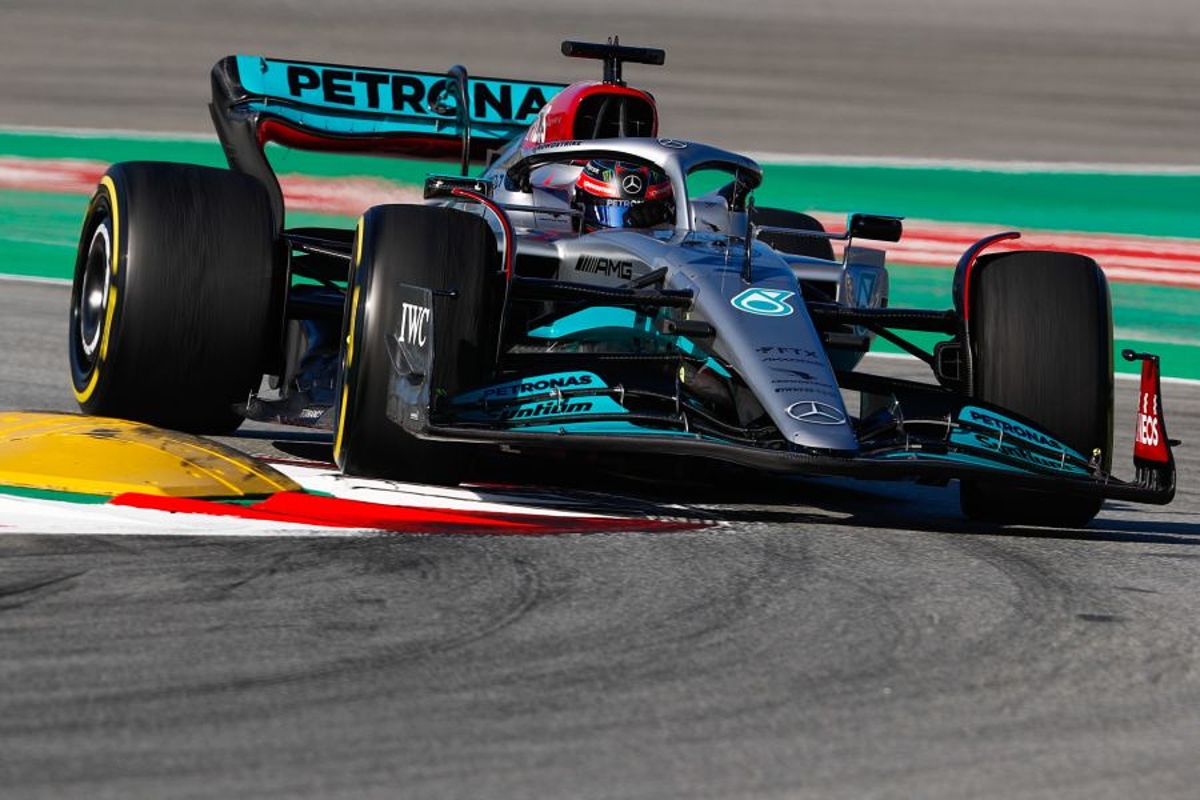
Mercedes and Red Bull ease fears as concerns emerge over new cars - What we learned at first test
Mercedes and Red Bull ease fears as concerns emerge over new cars - What we learned at first test

The latest F1 season got underway at the first pre-season test in Barcelona as teams and drivers sought to acclimatise to a new era of the sport.
Significant aerodynamic changes have brought a different breed of car into F1, with the aim of increasing overtaking opportunities by allowing cars to follow through corners more easily.
So after three days of running, GPFans takes a look at what we learned ahead of the 2022 campaign.
Mercedes and Red Bull shrug off ill-effects of title battle
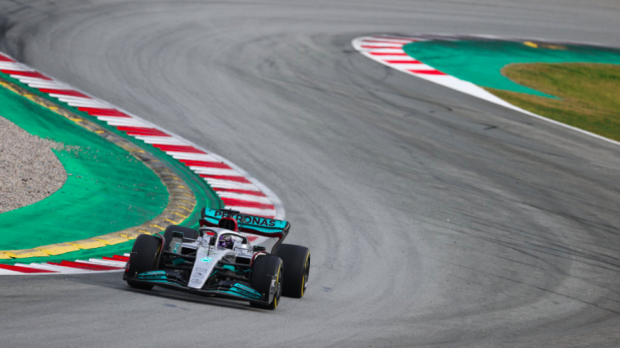
The new regulations brought about the chance of a grid reset with such a radical change for teams to contend with.
After McLaren and Ferrari's demise in 2009 in the last reshuffle of aerodynamics, many drew concern over the prospects for the top two in last seasons championship.
Yet Mercedes ended the test with the two quickest laps as Lewis Hamilton just edged new team-mate George Russell late on in the final afternoon.
Whilst lap time is largely unrepresentative during winter testing, the fact the Silver Arrows amassed the second-most number of laps with 393 across the three days will be pleasing for team principal Toto Wolff.
Red Bull kept its cards close to its chest with regard to lap time, but completed 358 laps despite missing a chunk of the second day's running when Sergio Perez stopped on track.
Any concerns over a title hangover can be forgotten.
McLaren and Ferrari mean business
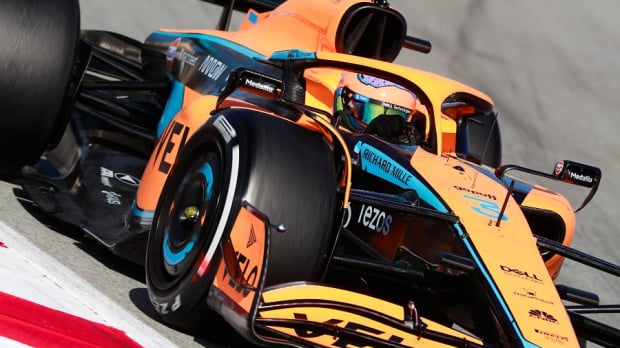
It feels too long since McLaren and Ferrari battled it out for title honours, though pole positions for each and a race win for the former whetted F1 fans' appetites last year.
But as Russell pointed out after day two in Barcelona, the red and orange teams certainly look alive to the prospects of competition for the upcoming season.
Again, whilst highlighting lap time is unrepresentative in testing, the two teams shared an even split of the opening two days, topping two sessions each before Mercedes unleashed the W13 in anger on Friday.
An argument could be made for either team having the strongest driver line-up on the grid, with Lando Norris and Daniel Ricciardo at McLaren, and Carlos Sainz with Charles Leclerc at Ferrari.
We will wait to see in Bahrain whether these two outfits can take the fight to the top two.
Teams face porpoising dilemma
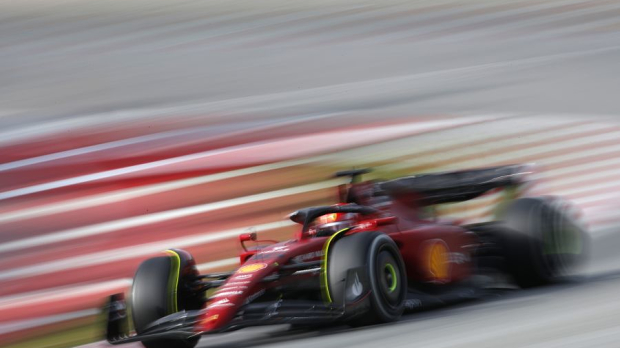
A surprise to teams during the test was the porpoising phenomenon, where cars bounced on suspension in a straight line due to aerodynamic stalling caused by the new ground-effect philosophy.
GPFans explained the phenomenon during the test, but teams face a race against time to find a solution ahead of the first race.
Russell labelled the effect as potentially a "safety concern", with the unpredictable nature of the aero stalling posing concern over braking stability at the end of a straight.
If anyone can figure out a workaround though, it is the incredible group of aerodynamicists involved in getting these machines to work in harmony.
F1's stark warning over new rule effectiveness
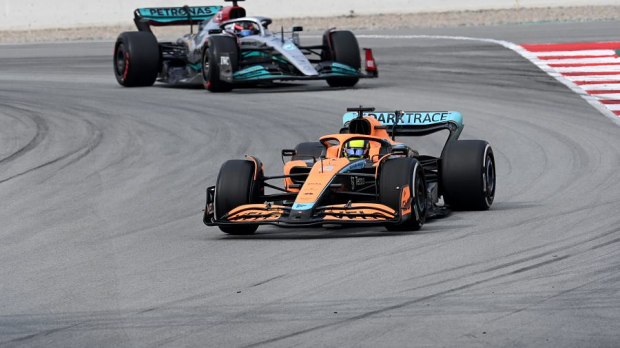
With the regulations almost completely focused around improving overtaking capabilities by allowing cars to follow more closely through corners, drivers and fans alike have been eagerly anticipating real evidence of such improvement.
The good news is the regulations have worked in allowing closer proximity for following cars through high-speed turns, thus providing a better position to attempt to launch an overtaking manoeuvre.
The issue that has come from the changes is the lack of a slipstreaming effect, which Norris and Russell both attested to having given the new cars a "perfect demonstration".
This will no doubt worry bosses ahead of the first race of the season, with any hope of removing DRS in the near future surely on the backburner.
New rules provide different solutions
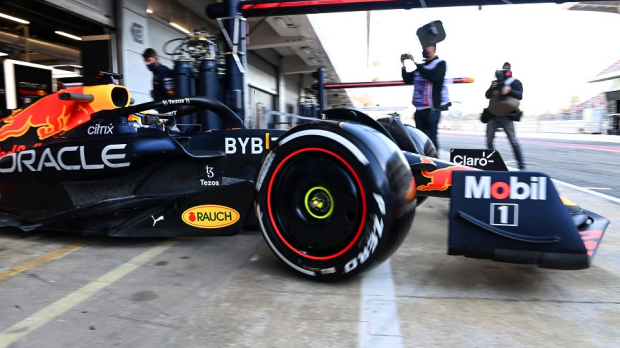
Perhaps the most refreshing aspect of the new rules has been the surprising difference in design philosophy between teams.
The regulations were said to be the most prescriptive in history yet no two cars look the same.
Some have taken to designing bargeboard-like sidepods, some with an aggressive undercut, some with cooling louvres and some without.
There are different front-wing configurations, beam-wing designs and floor activation concepts. The list goes on.
The teams will all eventually converge towards an optimum solution but for fans viewing the sport, it is great to see individuality flourish across the grid.
Bottas endures wretched first test with Alfa Romeo
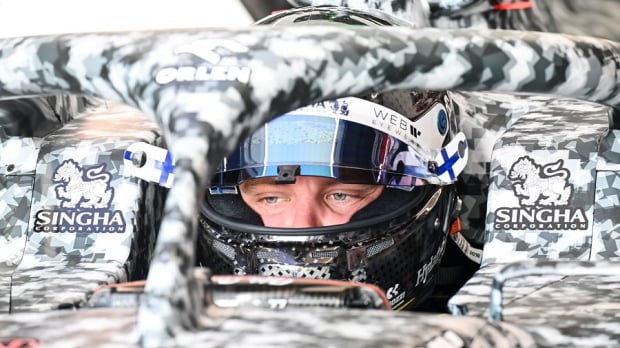
Hopes would have been high for Valtteri Bottas after switching to Alfa Romeo from Mercedes to become a team leader.
The team had one of the most preferential wind tunnel allowances, shut off development of the C41 early on to focus on the new C42 and have an upgraded Ferrari power unit to utilise.
Yet come testing, the Finn managed only 55 laps across a potential 12 hours of running allocated to him by the team as the C42 was hit with a myriad of issues.
Of course, if there are issues to be experienced then now is the best time to find them, but track time and getting a feel for working with his new team would have been much more preferential for Bottas, especially having to lead rookie Guanyu Zhou through the year.
Alfa Romeo will need an almost flawless test in Bahrain to get back on track ahead of the season opener.
Reliability issues hit
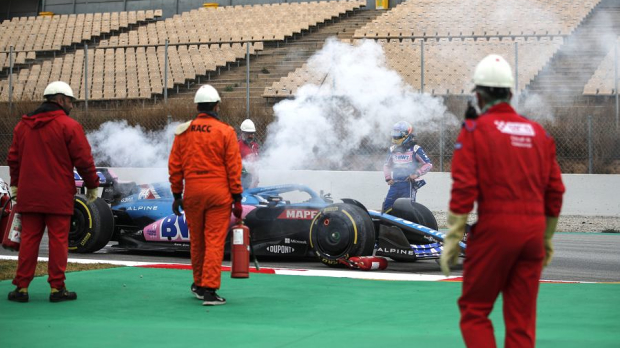
Alfa Romeo wasn't the only team to hit problems.
Almost every team experienced some form of gremlin across the three days, although some far worse than others.
Haas managed only 159 laps but no issue was more spectacular than the Aston Martin or Alpine fires on the final day of the test.
Reliability has been so impressive in recent memory yet the potential for an increase in failures will be heightened this year, given the aggressive packaging of bodywork used by teams to make sure the aerodynamic structures of the cars are optimised.
Haas off-track issues compound difficult test
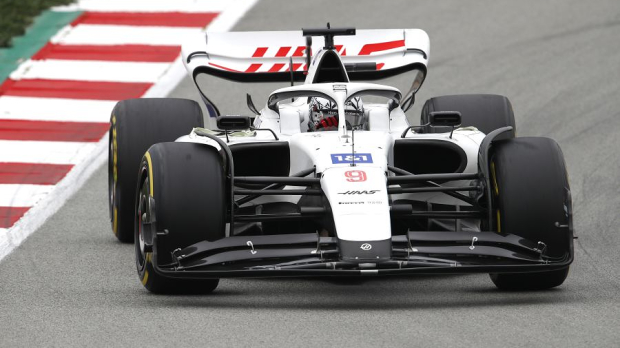
For the second time in its short history, Haas finds itself in an off-track kerfuffle with sponsorship that really is no reflection on the team.
The Uralkali sponsors, as well as the red and blue colours on the car were removed for Friday's running as a consequence of the Russian invasion of Ukraine that has dominated news headlines around the world.
The owner of Uralkali, Dmitry Mazepin, has significantly funded the team since son Nikita joined for the 2021 season with obvious concerns arising over finances should ties be severed.
With talks taking place in the coming weeks, Haas is in the unfortunate position of not knowing whether its main sponsor or driver will be around for the first race of the season.
That is not where team principal Guenther Steiner would have liked to have been at this point of pre-season.
Related
Change your timezone:
Latest News

Hamilton dealt China blow after major FIA decision as Ricciardo given huge Horner warning - GPFans F1 Recap
- 19 minutes ago

F1 team unveil star-studded lineup in China
- 1 hour ago

F1 Qualifying Today: Chinese Grand Prix 2024 start times, schedule and TV
- 1 hour ago

Horner delivers threat to Ricciardo over Red Bull pressure
- 2 hours ago

F1 Sprint Race Today: Chinese Grand Prix 2024 start times, schedule and TV
- 2 hours ago

Wolff left FUMING with Mercedes despite amazing Hamilton lap
- 3 hours ago
Related news

Red Bull lead the way as reliability concerns arise - How F1 teams fared in testing

Mercedes radical design triggers Horner concerns of F1 "mirror war"

Mercedes and McLaren play catch up to Red Bull and Ferrari - What we learned at second test

Verstappen throws down gauntlet - complete F1 2022 pre-season test results
F1 Standings

Drivers
- Oliver Bearman
- Charles Leclerc
- Carlos Sainz
- Lando Norris
- Oscar Piastri
- Pierre Gasly
- Esteban Ocon
- Sergio Pérez
- Max Verstappen
- Alexander Albon
- Logan Sargeant
- Lewis Hamilton
- George Russell
- Nico Hülkenberg
- Kevin Magnussen
- Fernando Alonso
- Lance Stroll
- Valtteri Bottas
- Zhou Guanyu
- Daniel Ricciardo
- Yuki Tsunoda
Races
-
 Gulf Air Grand Prix of Bahrain 2024
Gulf Air Grand Prix of Bahrain 2024
-
 Saudi Arabian Grand Prix 2024
Saudi Arabian Grand Prix 2024
-
 Grand Prix of Australia 2024
Grand Prix of Australia 2024
-
 MSC Cruises Grand Prix of Japan 2024
MSC Cruises Grand Prix of Japan 2024
-
 Grand Prix of China 2024
Grand Prix of China 2024
-
 Miami Grand Prix 2024
Miami Grand Prix 2024
-
 Gran Premio dell'Emilia Romagna 2024
Gran Premio dell'Emilia Romagna 2024
-
 Grand Prix of Monaco 2024
Grand Prix of Monaco 2024
-
 Grand Prix du Canada 2024
Grand Prix du Canada 2024
-
 Gran Premio de España 2024
Gran Premio de España 2024
-
 Grand Prix of Austria 2024
Grand Prix of Austria 2024
-
 Grand Prix of Great Britain 2024
Grand Prix of Great Britain 2024
-
 Grand Prix of Hungary 2024
Grand Prix of Hungary 2024
-
 Grand Prix of Belgium 2024
Grand Prix of Belgium 2024
-
 Heineken Dutch Grand Prix 2024
Heineken Dutch Grand Prix 2024
-
 Grand Prix of Italy 2024
Grand Prix of Italy 2024
-
 Grand Prix of Azerbaijan 2024
Grand Prix of Azerbaijan 2024
-
 Grand Prix of Singapore 2024
Grand Prix of Singapore 2024
-
 Grand Prix of the United States 2024
Grand Prix of the United States 2024
-
 Gran Premio de la Ciudad de Mexico 2024
Gran Premio de la Ciudad de Mexico 2024
-
 Grande Prêmio de São Paulo 2024
Grande Prêmio de São Paulo 2024
-
 Heineken Silver Las Vegas Grand Prix 2024
Heineken Silver Las Vegas Grand Prix 2024
-
 Qatar Grand Prix 2024
Qatar Grand Prix 2024
-
 Grand Prix of Abu Dhabi 2024
Grand Prix of Abu Dhabi 2024
About GPFans
GPFans is a multi-platform, multi-language brand dedicated to Formula One coverage. We bring you all the ins and outs of the sport, 24/7, everything from up-to-the-minute news and features to the latest viral stories and clips.We believe that a new generation of exciting, outspoken drivers will make F1 more popular than ever before, and we want to give our users access to as much of their heroes as possible, on and off the track. From Lewis Hamilton to Max Verstappen, Daniel Ricciardo to Sebastian Vettel, we provide in-depth analysis of every every Grand Prix in the season, from Australia to Abu Dhabi.
With Formula One under the new ownership of Liberty Media, how the sport is being covered is evolving, and GPFans will look to be at the heart of this progression into new media, as one of the fastest-growing sites covering the king of motorsports.
Follow us on your favorite social media channel
Corporate & Media
 Innovatieweg 20C
Innovatieweg 20C7007 CD, Doetinchem, Netherlands
+31645516860



















 Gulf Air Grand Prix of Bahrain 2024
Gulf Air Grand Prix of Bahrain 2024  Saudi Arabian Grand Prix 2024
Saudi Arabian Grand Prix 2024  Grand Prix of Australia 2024
Grand Prix of Australia 2024  MSC Cruises Grand Prix of Japan 2024
MSC Cruises Grand Prix of Japan 2024  Grand Prix of China 2024
Grand Prix of China 2024  Gran Premio dell'Emilia Romagna 2024
Gran Premio dell'Emilia Romagna 2024  Grand Prix of Monaco 2024
Grand Prix of Monaco 2024  Grand Prix du Canada 2024
Grand Prix du Canada 2024  Gran Premio de España 2024
Gran Premio de España 2024  Grand Prix of Austria 2024
Grand Prix of Austria 2024  Grand Prix of Hungary 2024
Grand Prix of Hungary 2024  Grand Prix of Belgium 2024
Grand Prix of Belgium 2024  Grand Prix of Azerbaijan 2024
Grand Prix of Azerbaijan 2024  Grand Prix of Singapore 2024
Grand Prix of Singapore 2024  Gran Premio de la Ciudad de Mexico 2024
Gran Premio de la Ciudad de Mexico 2024  Grande Prêmio de São Paulo 2024
Grande Prêmio de São Paulo 2024  Qatar Grand Prix 2024
Qatar Grand Prix 2024  Grand Prix of Abu Dhabi 2024
Grand Prix of Abu Dhabi 2024